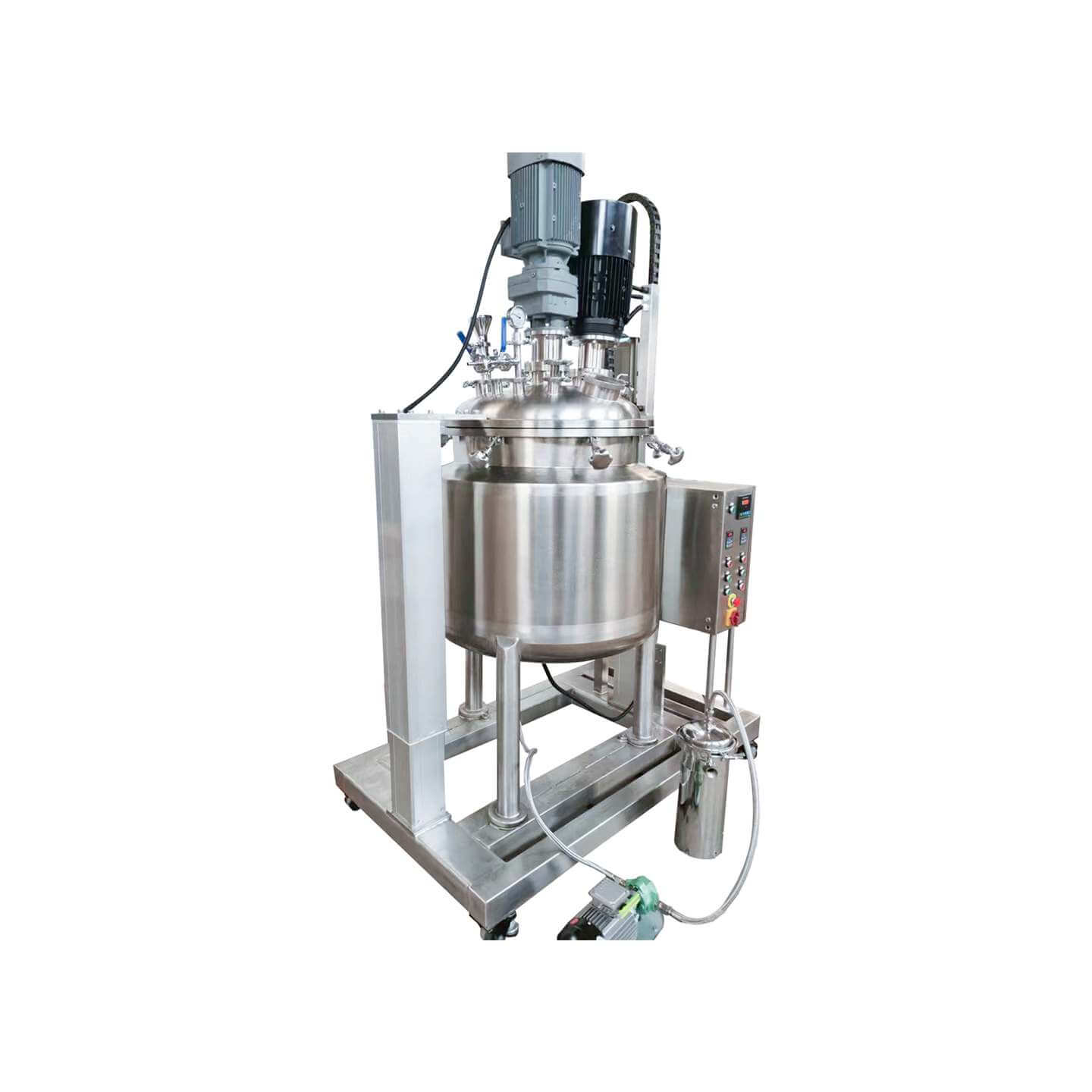

Laboratory Reactor
Laboratory reactor: used in the chemical industry, pesticide, paint, and other fields
Material
glass, stainless steel (316, 304), carbon steel, others
Capacity (L)
10-10000+
Mixing system
anchor, paddle, frame and others
Heating system
electric heating, oil heating and others
The laboratory reactor is small in size, beautiful in appearance, light, and fast in installation. It is composed of a pot body, pot cover, stirrer, jacket, support and transmission device, shaft sealing device, etc. The type of stirring device, rotation speed, sealing structure, heating method, etc. are produced.
Request a quoteThe lab reactor is composed of a pot body, a pot cover, a stirrer, a heating jacket, a supporting transmission device, and a shaft sealing device. The pot body, pot cover, stirrer, and shaft seal are all made of stainless steel. The pot body and the pot cover are connected by flange sealing, the lower part of the pot body is provided with a discharge port, the pot is provided with a stirrer, and the pot lid is provided with a process pipe hole for feeding, stirring and observation, temperature and pressure measurement, steam extraction, and fractionation. safe venting, etc.
The upper part of the pot cover is welded on the bracket, the reducer and the motor are installed, the stirrer in the pot is driven by the transmission shaft, and the shaft seal is installed on the top of the pot cover. The heating jacket is provided with nozzle holes such as inlet and outlet oil (steam) temperature measurement, steam vent valve, electric heating rod, and so on.
Due to the different production processes and operating conditions, users have different requirements for the lid opening process and stirring types (paddle type, anchor type, frame type, screw type, etc.). ), support type (suspension type or support type) and packaging sealing device, you can contact our factory for individual design.

Lab Reactor Features
1. Open the kettle cover: the ordinary model is fastened with 8-M20 bolts, and the nuts need to be unscrewed one by one when opening, which is laborious and labor-intensive. The quick-opening kettle is pressed and fastened by the snap ring and the corresponding bolt. When opening, the snap ring can be removed by loosening each top wire several times, so that the lid can be opened quickly.
2. The kettle body is taken out: the common type is to manually remove the lid of the kettle with both hands, then lift the kettle body, turn it over, and then pour out the material. But the quick-opening kettle uses manual screws, which can easily lift the lid and rotate it 90 degrees to make room for the body of the kettle. Then the worm on the hand crank column drives the worm wheel to turn the pot body 135 degrees and pour out the material.
3. The heating furnace of the Lab reactor can be installed and disassembled at will. It only takes 2 seconds to go up and down. Therefore, the kettle body can be cooled in the air, and the reaction process time can be shortened.
Laboratory reactor manufacturers will be equipped with a variety of valves in the production process, each of which has its characteristics and application fields.
Types of Valves Equipped with Laboratory Reactors
1. Gate valve: It is a commonly used shut-off valve, which is used to connect or cut off the medium in the pipeline, but it is not suitable for regulating the flow of the medium. Gate valves are generally used in laboratory reactors with large changes in pressure, temperature, and diameter.
2. Globe valve: It is also a cut-off valve, similar to the gate valve, except that the globe valve is suitable for the case of a small diameter.
3. The throttle valve controls the pressure and flow of the fluid by changing the flow section. It is a kind of regulating valve. However, due to its structural limitation, this valve does not have the regulating characteristics of the regulating valve, so it cannot be used in place of the regulating valve.
4. The butterfly valve is a valve that uses a circular disc that rotates with the valve stem as the opening and closing parts to realize the opening and closing action. The butterfly valve is mainly used as a cut-off valve, and it can also be designed to have the function of adjusting the cut-off and adjusting. Butterfly valves are mainly used in pipe diameters with low inlet and outlet pressures.
5. The check valve is a valve that can automatically prevent the backflow of the fluid. The disc of the check valve is opened under the action of the fluid pressure, and the fluid flows from the inlet side to the outlet side. When the inlet side pressure is lower than the outlet side, the valve disc is in the fluid. Under the action of pressure difference, gravity, and other factors, it will automatically close to prevent the backflow of fluid. This valve is mainly used to stabilize the pressure in the kettle
6. The ball valve is a valve that uses a sphere with a circular through the hole as the opening and closing part, and the sphere rotates with the valve stem to realize the opening and closing action. In the laboratory reactor, it is mainly used for discharging liquid materia.




